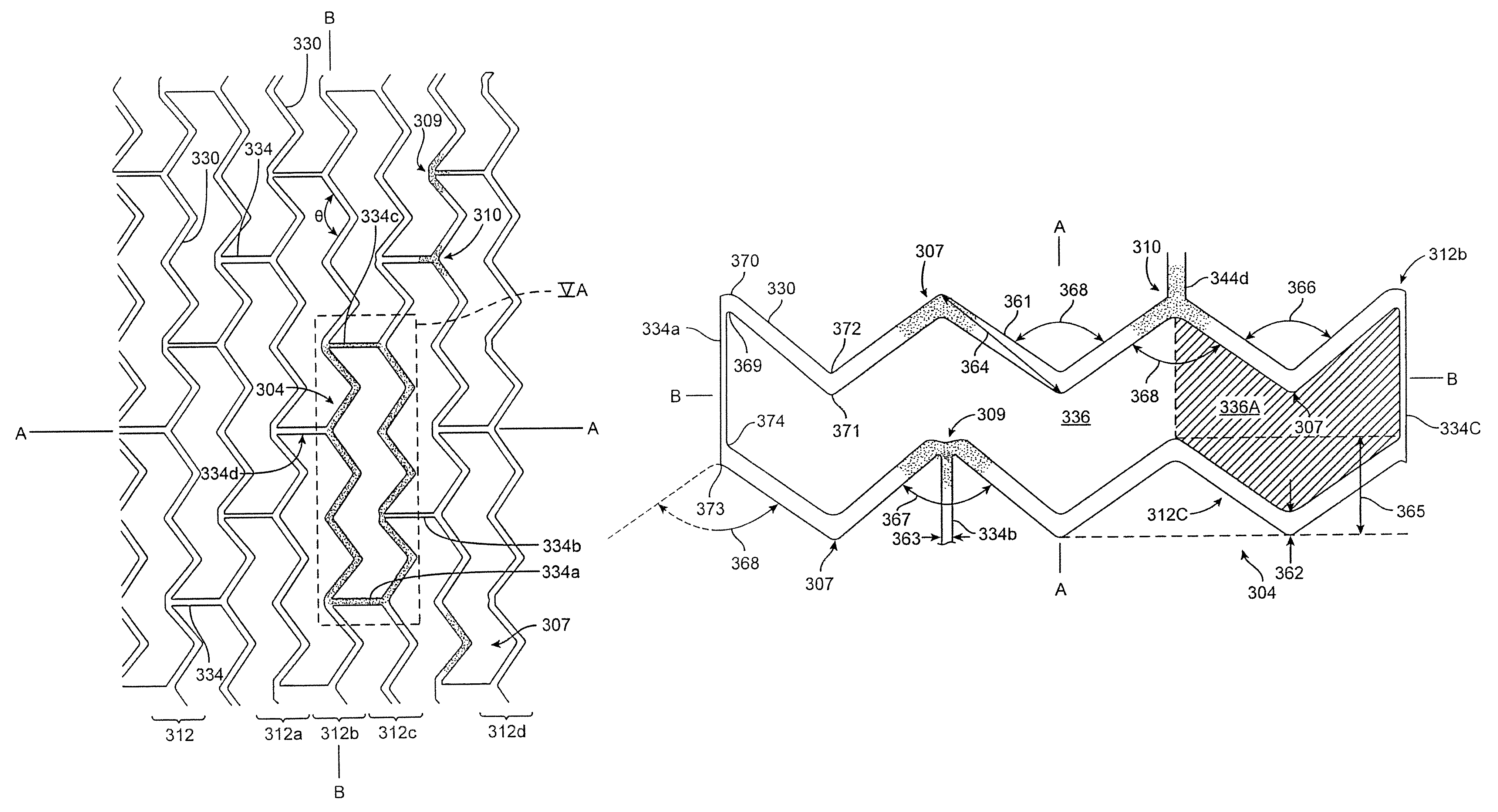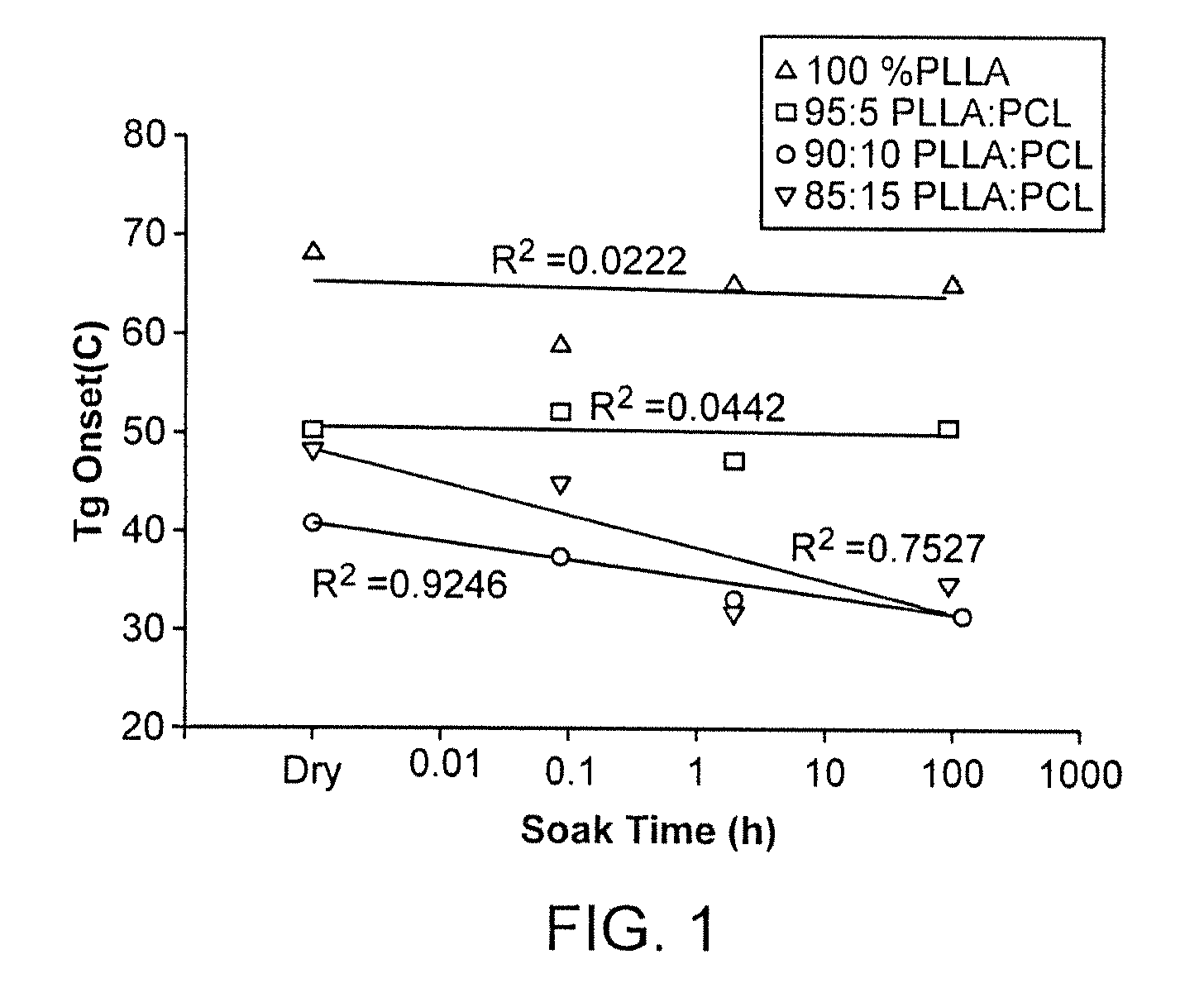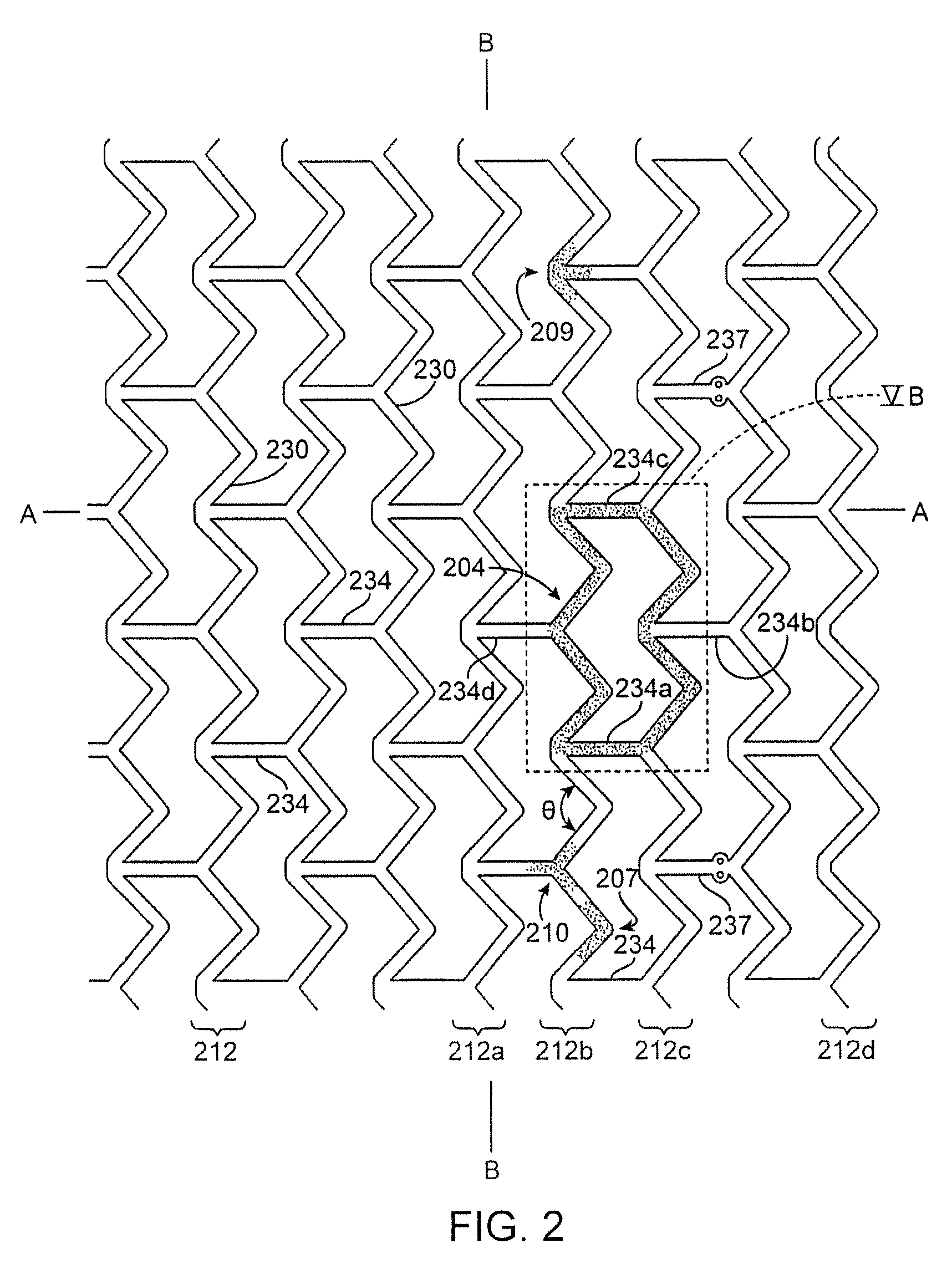Shape memory bioresorbable polymer peripheral scaffolds
a bioresorbable, peripheral scaffolding technology, applied in the field of polymer medical devices, can solve the problems of restenosis that remains significant, its treatment can be challenging, and the strut fracture is chronic, and the stent is not bioresorbabl
- Summary
- Abstract
- Description
- Claims
- Application Information
AI Technical Summary
Benefits of technology
Problems solved by technology
Method used
Image
Examples
examples
[0133]Scaffold samples were prepared with two poly(L-lactide-co-caprolactone) molar compositions of PLLA / PCL, 90:10 and 90:5. For comparison, PLLA scaffold samples were also prepared. The samples were tested after e-beam sterilization. Scaffolds with a poly(DL-lactide) / Everolimus coating were also tested. All scaffold samples were the V79 pattern.
[0134]90:10 PLLA-PCL with intrinsic viscosity (IV) of 3.2 was processed by extrusion (water content 310 ppm, temp approximately 380 deg F.) to form a tube with 0.059 in ID. The tube was expanded to 8 mm OD at a temperature above its Tg but lower than Tm. It was then laser cut into a V79 scaffold pattern. L-lactide monomer content in extruded tubing and expanded tubing was 0.12%.
[0135]95:5 PLLA-PCL with IV of 3.8 was processed by extrusion (water content 320 ppm, temp approximately 370 deg F.) to form a tube with 0.051 in ID. The tube was then expanded to 7 mm OD at a temperature above its Tg but lower than Tm. It was then laser c...
PUM
| Property | Measurement | Unit |
|---|---|---|
| Fraction | aaaaa | aaaaa |
| Fraction | aaaaa | aaaaa |
| Fraction | aaaaa | aaaaa |
Abstract
Description
Claims
Application Information
 Login to View More
Login to View More - R&D
- Intellectual Property
- Life Sciences
- Materials
- Tech Scout
- Unparalleled Data Quality
- Higher Quality Content
- 60% Fewer Hallucinations
Browse by: Latest US Patents, China's latest patents, Technical Efficacy Thesaurus, Application Domain, Technology Topic, Popular Technical Reports.
© 2025 PatSnap. All rights reserved.Legal|Privacy policy|Modern Slavery Act Transparency Statement|Sitemap|About US| Contact US: help@patsnap.com



